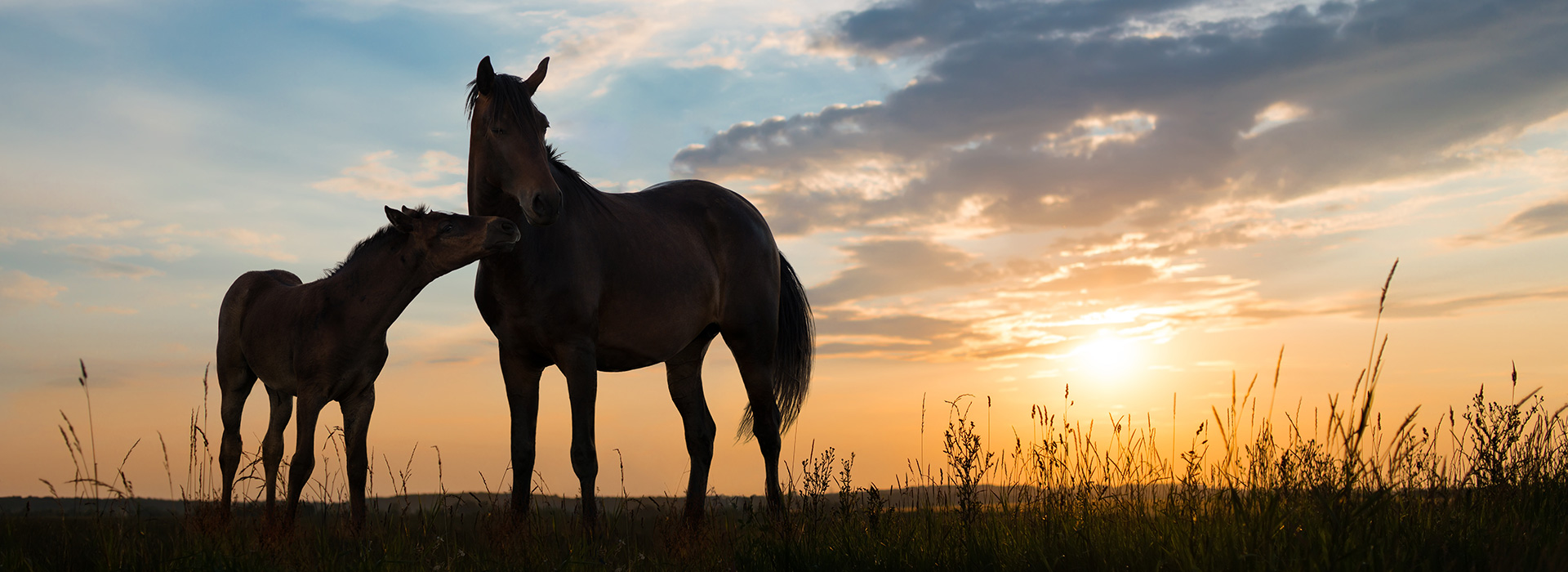As with so many aspects of equine management there are many nuggets of sound advice and sometimes advice well worth avoiding. Five of the most common misconceptions are detailed below:
Myth # 1: Concentrates or grains should form the foundation of a horse’s diet, and hay is secondary
False: Horses evolved on grasslands, wide-open spaces that offered a variety of vegetation from which to pick and choose. As such, their digestive tract is designed to break down forages and to derive energy from the digestion of those plants. The energy needs of certain horses, particularly members of breeds known to have low metabolic rates, can be met by forage alone. Most horses will eat somewhere between 1.5 to 2.2% of body weight per day. Forage should make up the majority of that amount. The absolute minimum forage requirement for any horse is 1% of its body weight. Therefore, a 500kg horse would require 5 kilograms of forage daily. Only a few circumstances should ever require such a minimal forage intake, so a more reasonable recommended forage minimum is 1.5% of body weight daily, which would be 7,5kg per day for a 500kg horse. Certain classes of horses might consume more. Lactating mares, for example, may eat 3- 5% of body weight at peak milk production. Concentrates should not be neglected for those horses that require them. Selection of the right concentrate for the individual can be key to making effective use of forages and balancing the diet.
Myth # 2: Lucerne hay is best left for dairy cows, not horses
False: Lucerne hay is a useful forage in the management of horses, and in some parts of the world, it is a staple feedstuff. The advantages of lucerne hay are numerous: most horses like the flavor so they are apt to clean up a serving; it is packed with energy; it has ulcercalming properties; and it comes in convenient alternative forms such as cubes and pellets. Lucerne may not be the right fit for every horse but concerns of Lucerne being too rich for all horses are unfounded as many horses require the nutrient boost this legume provides. Compared to grass hay, Lucerne hay is richer in energy, protein and certain minerals such as calcium. Specific classes of horses benefit from being fed lucerne, including those with increased calorie needs such as youngsters, lactating mares, aged horses, and some performance horses. Because of its palatability, it is usually fed to horses recuperating from illness or those that have a limited appetite. As with all hays, there is a wide range of lucerne quality so care should be taken when sourcing this product.
Myth #3: Protein is the root of all evils, and every precaution should be made to rid a diet of excessive protein
False: Protein is a vital nutrient for all horses, and its functions in the body are numerous. Protein deficiency can be caused by a diet of poor quality hay with little or no concentrate. Deficiency is characterised by muscle wasting, difficulty staying focused, and a general lack of energy. Some protein-deficient horses have a distinct loss of muscling over the top line, with protruding backbone and hipbones.
Protein is not energy. In fact it is an inefficient energy source. When given a choice, the body would rather use other nutrients for energy such as carbohydrates and fats. However in an energy-deficient diet, the body breaks down muscle tissue to use the protein for energy to fuel the body as a last resort Horses are adept at processing protein, so there is no need to worry about adversely affecting kidney function. Nitrogen is a by product of protein digestion, and it is filtered by the kidneys and excreted from the body. Because of excessive nitrogen secretion in the urine, a strong ammonia smell might accompany a high-protein diet. Many horses that consume high-protein diets will also drink more water than usual, which increases urination. However excessive ammonia can aggravate conditions such as COPD (Chronic Obstructive Pulmonary Disease) and since protein is expensive, horses should ideally not eat more than required. On the growth front, there is no evidence that developmental orthopaedic disease in young horses is brought about by too much protein. In fact, it is thought that rapid growth created by incorrect energy levels can have a bigger effect on DOD (Developmental Orthopaedic Disease). A balanced diet reviewed by an equine nutritionist will ensure that young horses are correctly nourished for steady and safe growth.
Myth # 4: Wheat Bran has a Laxative Effect
False: Previously, bran was thought to have a laxative effect that would “clean them out” and help to prevent colic. Cornell University researchers studied the laxative effect of bran at various levels in the diet, with some horses being fed up to 50 % hay and 50 % bran. They found that there were only slight variations in water content of the droppings at various feeding levels and certainly not enough to pronounce bran a laxative. Another study compared the droppings of horses fed a ration of 10 % bran and 90 % chopped hay to those fed 100 % chopped hay. No difference in the water content of the droppings was found. So why do horses produce watery droppings when they eat a bran mash? Since feeding bran mash only occasionally, or even weekly, represents a sudden change in diet as the gut microbes see it, they start to die off. This is what causes the diarrhoea or watery droppings that horse owners erroneously assume is a laxative effect and which can actually do more harm than good.
Myth #5: Feeding rates on feed bag tags are exaggerated, and my horse is fine with just a handful of feed each day
Manufacturers design feeding rates to reflect the level of fortification in the feed. Fortification is the amount of protein, minerals, and vitamins added to a feed to make it nutritionally appropriate for the class of horse for which it is intended. Giving ‘just a handful of feed’ will supply few calories and few nutrients. If horses are not fed the minimum recommended amount per day, they will not get an adequate supply of nutrients. However if a horse becomes obese by feeding the minimum requirements, it is possible to limit caloric intake further and still supply vital nutrients by replacing the concentrate with a balancer pellet or a well-formulated vitamin/mineral supplement in conjunction with appropriate forage.
Reference http://www.equinews.com/article/decision-2011-laying-to-rest-five-feedingmyths




